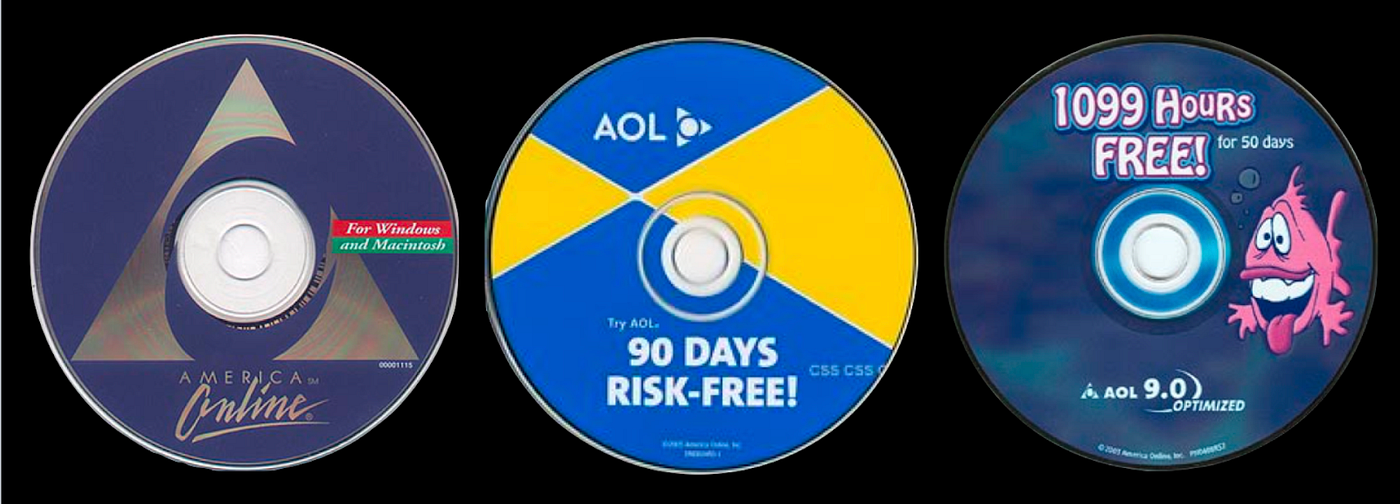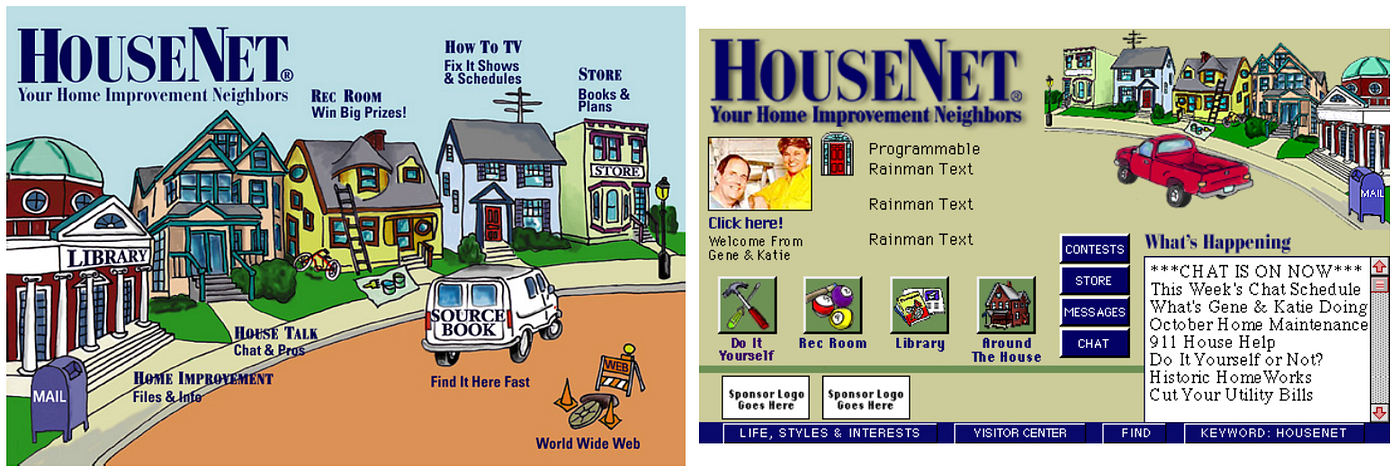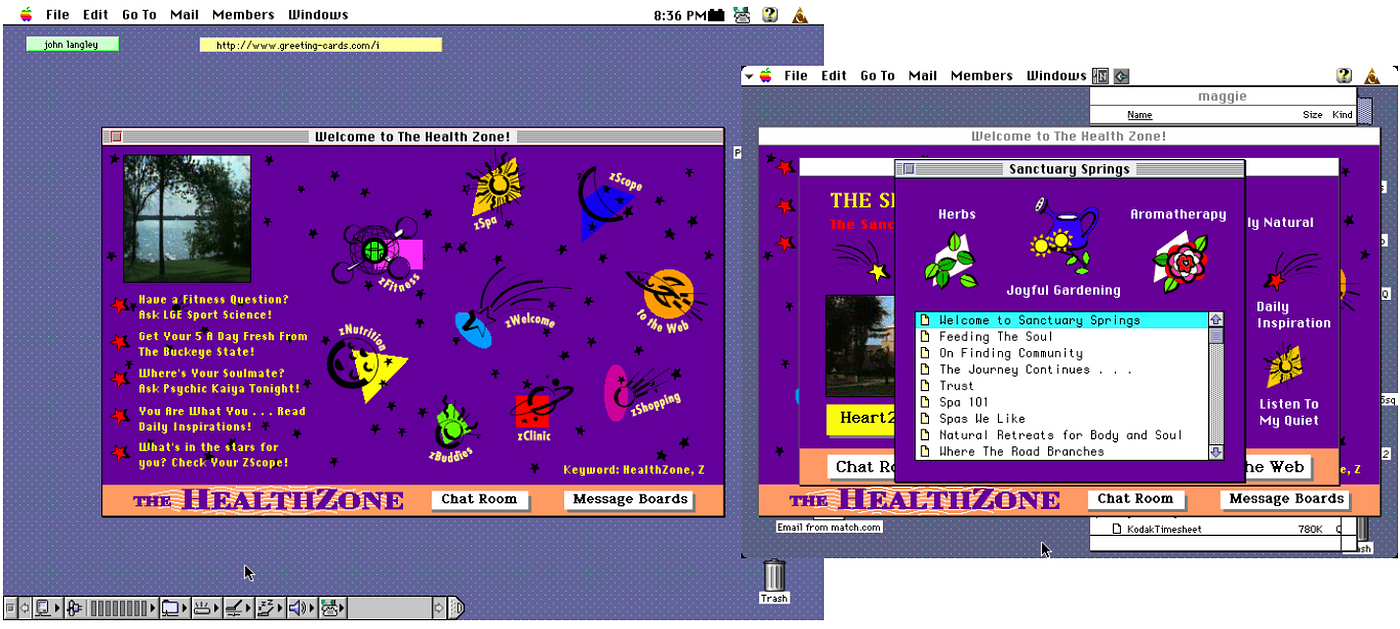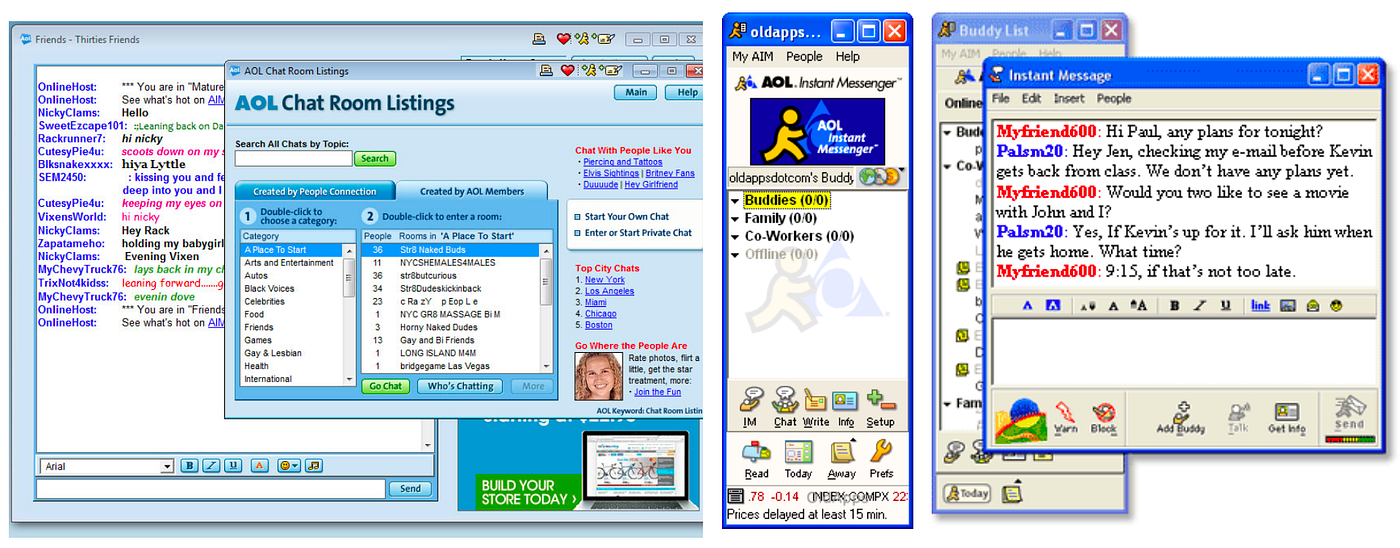Maligned AOL and research into gender differences in games
In the 80’s, on the east coast, another community was created by Steve Case. AOL started as a BBS and eventually evolved to developing its own proprietary software. Not the web, but not a BBS anymore, AOL grew to be one of the most influential and populated online communities on the internet. At its peak, it was shipped on every home PC — Compaq, Dell, HP — as well as sending out discs with the software bundled in almost every magazine sent into American homes. The company had tens of millions of users and was how a generation experienced the internet.

It was one of the first services to allow multiple user names on one account so members in families could each have different experiences. It included real time chat rooms with moderators who traded time for service fee reductions and instant messaging which was created by AOL before these things showed up on the web. AOL was the training ground for mass America on the internet but also was an innovator for many of the experiences we take for granted today.


Full disclosure — I consulted for AOL in the early to mid-nineties for their Greenhouse partners which was their version of VC funded startups inside the AOL ecosystem. Brands like iVillage, Motley Fool and others started as Greenhouse partners. And later (2000–2004) I was an employee managing the community design team and later the west coast UX team as we developed and shipped AOL 9.0 which was a hybrid self-contained + web based, full cohesively designed experience.
For many internet insiders, AOL was the place of newbies and internet naive people who misbehaved when let loose on the actual web. But for those who used AOL, it was a well designed, cohesive, interlocked set of experiences that served the needs of millions of people for years and was designed by a team of collaborative designers working across both coasts. We ran design reviews across teams so that we could share best practices and patterns (before patterns and best practices and design systems were a thing) with the intent to make sure the experience was consistent, cohesive and made sense for our users regardless of the area they were engaged in.


We can see, in the way that Facebook is adding features, similarities for creating a walled garden to keep people in their domain, as was created in AOL. But we are also seeing the same mistakes made as before without an understanding of any learnings from history.
The other area I covered in this week is Brenda Laurel. Laurel has a background in Theater and Computing which gives her interesting insight into play, improv, embodied cognition, story, as well as all the tools and things we think about with computing and design. She has moved back and forth between writing, education, gaming and interaction design most of her career.

She began her west-coast career at Atari, first as a software strategist and then as a member of the research staff at the Atari Systems Research Laboratory, where she developed a theory of first-person presence in interactive environments and worked with AI to improve the quality of interactive games (1979–1983). She was an early designer of VR experiences and was at Apple for several years before moving to Interval Research.
At Interval Research (1992–1996), an incubator initiative funded by Paul Allen and David Liddle, she explored research in gender and technology, and based on that work, co-founded Purple Moon in 1996 to create interactive media for girls.
She continues to be engaged as a designer and researcher as well as training the next generation through her work with various universities and serving on the board of the IXDA.
The reason I bring Brenda Laurel up, is that she is one of the few people who early on, was actively studying gender and technology. At the time, there were no games specifically designed for girls on the computer. Through her research, they learned about how girls embody the characters, how they interact with the worlds they create and eventually they evolved the games that they created at Purple Moon. The games explored both in game and out of game collecting and trading and had a strong sense of narrative and story.
Eventually the company shut down and the assets were sold to Mattel — but it was one of the first to really consider girls involvement in gaming and technology in a way that hadn’t been seen before.
Readings:
From Computing Machinery to Interaction Design
The History of Interactivity
Brenda Laurel from New Media Futures: The Rise of Women in the Digital Arts
Watch:
Brenda Laurel on Making Video Games for Girls (YouTube)
AOL — The Rise and Fall of the First Internet Empire (YouTube)
Note: All these lectures were delivered via video with related slide decks of images. Following the intro, students had a series of readings and videos to watch related to the topics covered in the lecture or the overall time frame. They were then given a set of prompts to stimulate their thinking and writings which ended up in a class blog.
Computer Age
Computer Age: The World Wide Web, Browsers, Early Community, intro lecture 10
Computer Age: Early personal computers & games – intro lecture 9
Computer Age: Christopher Alexander, Muriel Cooper and Architecting Space, intro lecture 8
Silicon Age
Silicon Age: Visioning the Future, intro lecture 7
Silicon Age: The Mother of All Demos, intro lecture 6
Industrial Age
Industrial Age: Mid-Century Designers, Designing For People, intro lecture 5
Industrial Age: Between the Wars, intro lecture 4
Industrial Revolution & Manifestos, intro lecture3
In the Beginning
Read intro lecture 2 — In the Beginning Part 2
Read intro lecture 1 — In the Beginning Part 1
Setting the Stage
See the visual syllabus and how I approached putting this class together